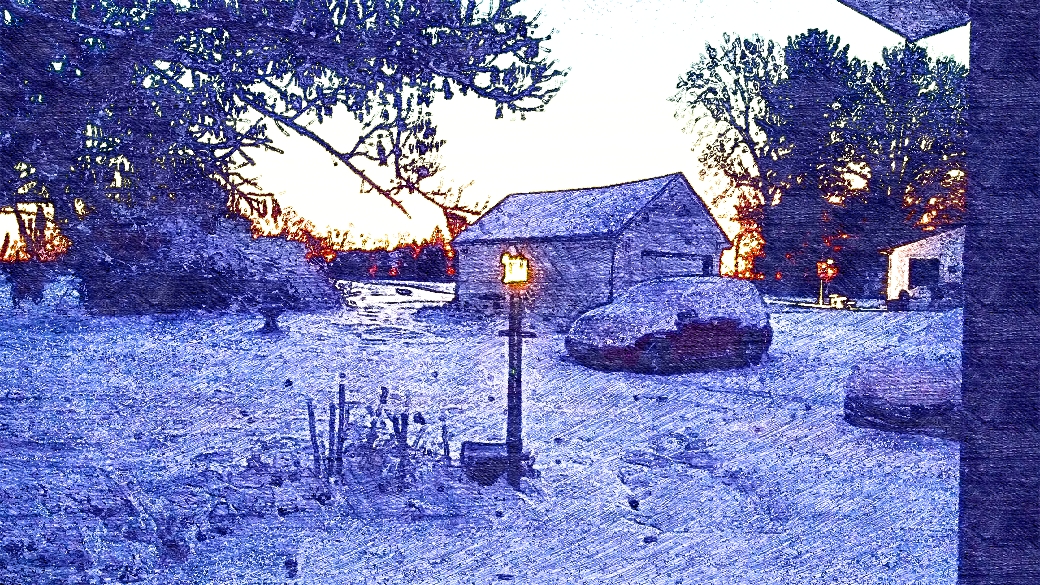
“It’s the most wonderful time of the year”…not! At least for astronomy! Last night it was around 19 degrees F with a low of 16. Growing up in Arizona these conditions are challenging for me! My AR102 on a Sirius mount recently got a new Hand Control and I am trying to get it set up and running effectively. All of the telescope and computer cords are stiff and inflexible when the temps go below freezing. This caused a power malfunction when the power cord pulled out of the laptop when the table was inadvertently bumped. It is an old laptop and the battery is bad so all of the hard earned adjustments were lost when the power went bye, bye. With the moon almost full and high clouds moving in it was time to call it a night. However, it wasn’t because of the cold if you know how to dress appropriately.
Here are some tips for cold weather observing. My heaviest coat is a bright orange camo coat that is wind and waterproof. It is for hunting so I normally never wear it around town. However, for observing who cares if it is orange camo? Wear the heaviest and most functional coat you got! I also use a down vest under the camo coat with a sweater and/or hoodie. Hoodies are nice since it complements your head gear.
Fingerless gloves from Bass Pro Shop rock. Putting on, then taking off gloves, gets old quick so I just leave on the fingerless gloves and put my hands in my coat pockets when they need to warm up. Heavy stocking caps are the ticket for your head. It is always fun to wear my Denver Broncos cap here in Kansas City Chiefs country. Of course no one but my wife ever sees me wear it to observe anyway. If you have a stocking cap, hoodie, then a coat hood, you can stay reasonably warm even in freezing temps with 3 layers of head coverings.
Gore tex pants (or nylon warm ups)over my regular jeans or sweat pants really help the legs to stay warm. People always talk about your core temps being important but I have found that I need to have my leg area insulated and protected as much or more than the core. If you can keep the chill out of your lower extremities it helps make the core much warmer. Remember the legs expose a lot of area, and the more area, the more heat loss. One of the differences between observing and most other outdoor activities is that you do very little physical exercise with observing. When you add in exercise, especially walking, the lower extremities are not as important to insulate. The sedentary nature of the hobby changes some of the common wisdom.
Foot comfort is huge. You can buy a pair of expensive boots and socks to help you stay warm or buy some hunting socks and 18 dollar “muck” boots at Walmart. The “muck” boots are just rubber boots that are often used in mud or “mucking” stalls for horses. I keep a pair at the back door for wet or cold nights. If it is really cold put on 2 pairs of hunting socks!
The last two are my “secrets” for staying warm! For 12-20 dollars you can buy a heating pad. Since I have power near my telescopes I just plug in the heating pad, put it inside my coat then observe in comfort! I got the idea from reading about the Palomar 200″ Telescope. For years they used heated flight suits leftover from WW II! A heating pad is much easier (and safer) to get today than a WW II vintage electric heated flight suit. If you need to move around just get an extension cord!
The second “secret” is the best one! I don’t do much visual observing anymore so everything is automated. You open up, make sure the scope is still aligned ok and head indoors where you can log into the computer from a nice warm spot inside. I use Teamviewer so you can use, computer, phone or tablet to control the scope. You add the destination, program the exposures and even have it shut down when it is done. Usually, I go to bed and upload the images in the morning! However, much of the above advice was learned when spending hours calibrating and setting up the scopes for automated use like last night. The higher the level of automation the longer and harder it is to get everything set up.
Don’t let the cold spoil your astro adventures. Winter skies are not only interesting but also give some clear views. Dress well and continue to enjoy the night sky!